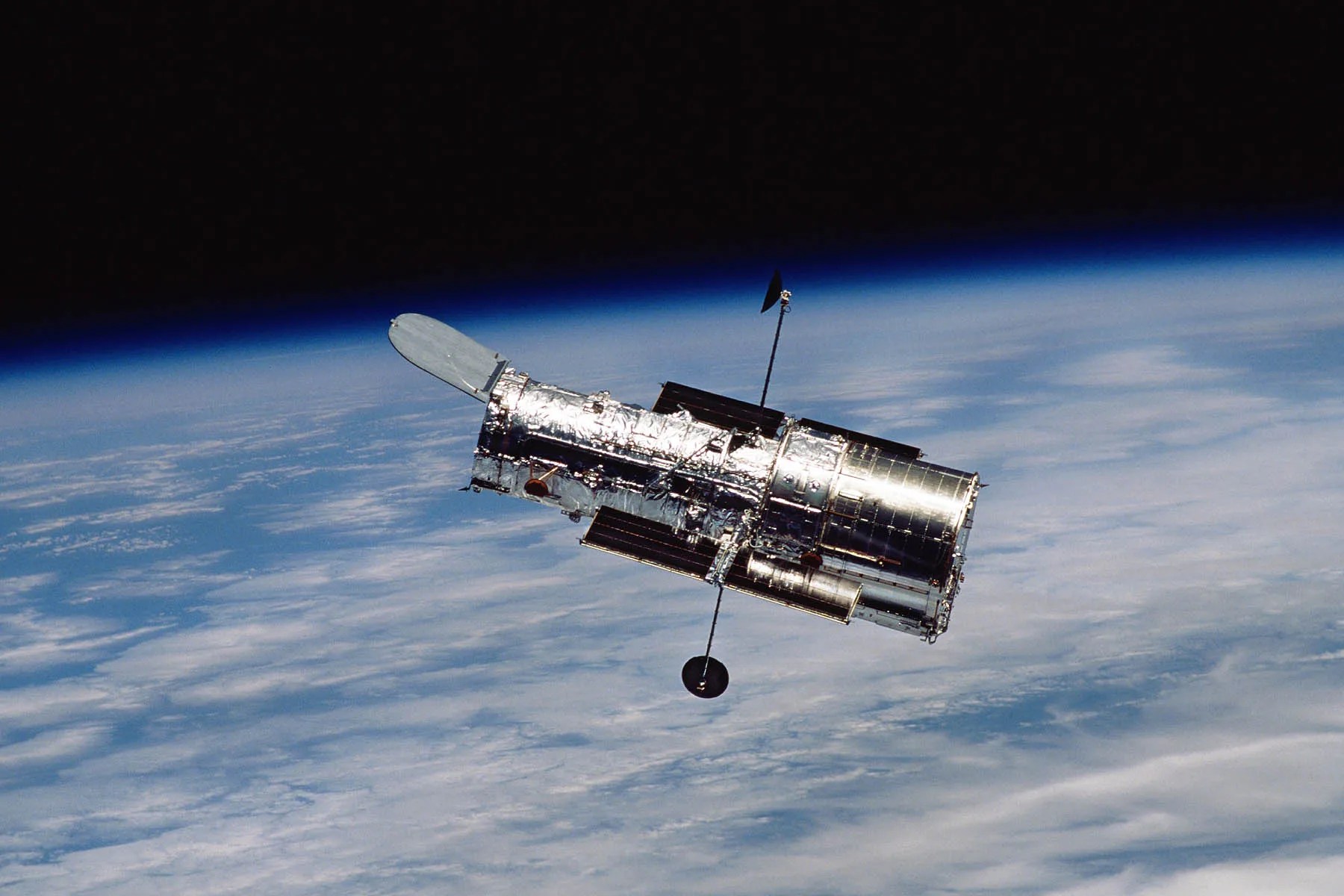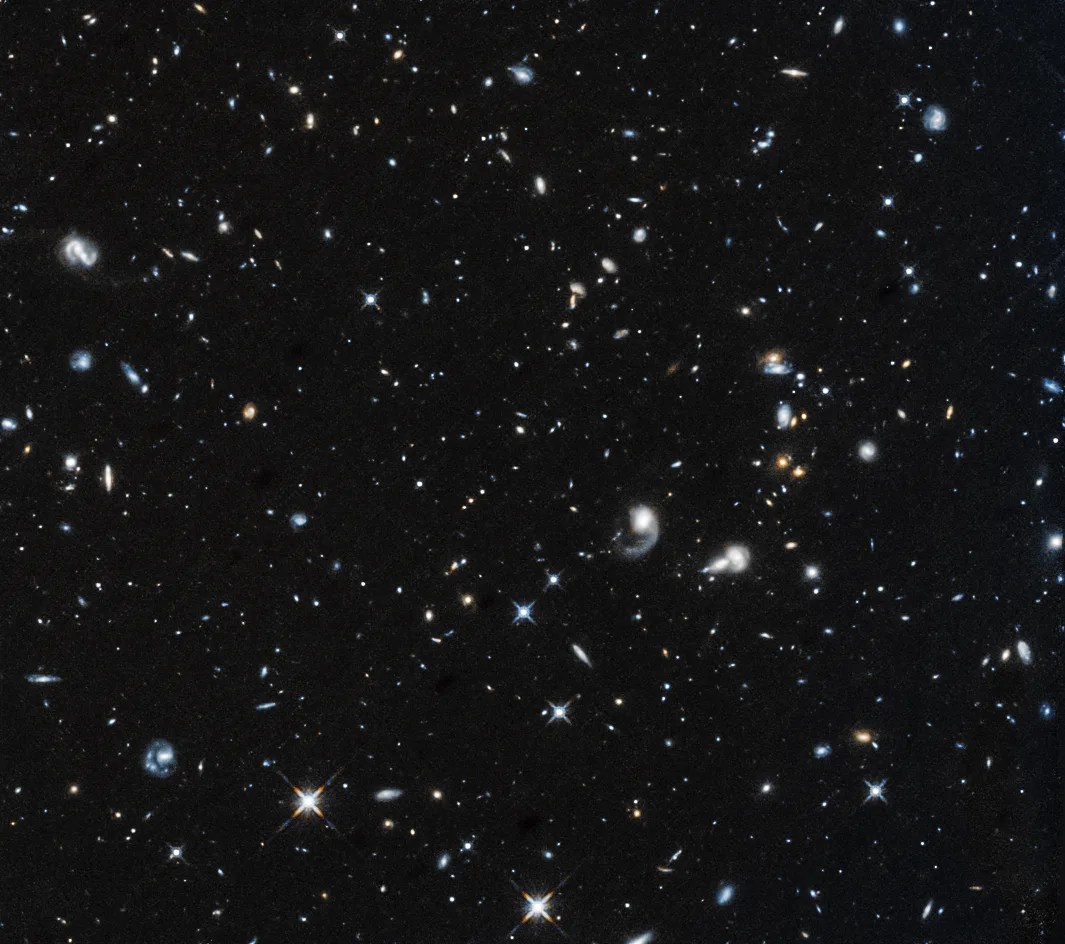6 min read

In the early morning of October 27, the Hubble Space Telescope targeted a field of galaxies not far from the Great Square in the constellation Pegasus. Contained in the field were star-forming galaxies up to 11 billion light-years away. With the target in its sights, Hubble’s Wide Field Camera 3 recorded an image. It was the first picture captured by the telescope since it closed its eyes on the universe three weeks earlier, and it was the result of an entire team of engineers and experts working tirelessly to get the telescope exploring the cosmos once again.
“This has been an incredible saga, built upon the heroic efforts of the Hubble team,” said Hubble senior project scientist Jennifer Wiseman at NASA’s Goddard Space Flight Center in Greenbelt, Maryland. “Thanks to this work, the Hubble Space Telescope is back to full science capability that will benefit the astronomical community and the public for years to come.”

On the evening of Friday, October 5, the orbiting observatory had put itself into “safe mode” after one of its gyroscopes (or “gyros”) failed. Hubble stopped taking science observations, oriented its solar panels toward the Sun, and waited for further instructions from the ground.
It was the beginning of a three-day holiday weekend when members of the spacecraft’s operations team started receiving text messages on their phone, alerting them that something was wrong with Hubble. In less than an hour, more than a dozen team members had gathered in the control room at Goddard to assess the situation. After unsuccessfully reviving the failed gyro, they activated a backup gyro on the spacecraft. However, the gyro soon began reporting impossibly high rotation rates — around 450 degrees per hour, when Hubble was actually turning less than a degree per hour.
“This is something we’ve never seen before on any other gyros — rates this high,” said Dave Haskins, Hubble’s mission operations manager at Goddard.
Hubble has six gyros aboard, and it typically uses three at a time to collect the most science. However, two of its six gyros had previously failed. This was Hubble’s final backup gyro. The operations team either had to figure out how to get it working, or turn to a previously developed and tested “one-gyro mode,” which is proven to work but would limit Hubble’s efficiency and how much of the sky the telescope could observe at a given time of the year — something both the operations team and astronomers want to avoid until there is no other choice.
As they decided what to do next, team members stayed in the control center continuously to monitor the health and safety of the spacecraft. Because Hubble’s control center had switched to automated operations back in 2011, there were no longer people in place to monitor Hubble 24 hours a day.
“The team pulled together to staff around the clock, something we haven’t done in years,” Haskins said. Team members stepped in to take shifts — several of Hubble’s systems engineers, others who help run tests and checkouts of Hubble’s ground systems and some who used to staff Hubble’s control room but hadn’t in a long time. “It’s been years since they’ve been on console doing that kind of shift work. To me it was seamless. It shows the versatility of the team.”
Meanwhile, during the holiday weekend, Hubble Project Manager Pat Crouse was busy recruiting a team of experts from Goddard and around the country to analyze the backup gyro’s unusual behavior and determine whether it could be corrected. This anomaly review board met for the first time that Tuesday, October 9, and contributed valuable insight throughout Hubble’s recovery.
It took weeks of creative thinking, continuous tests and minor setbacks to solve the problem of the misbehaving gyro. Members of the operations team and of the review board suspected there might be some sort of obstruction in the gyro affecting its readings. Attempting to dislodge such a blockage, the team repeatedly tried switching the gyro between different operational modes and rotating the spacecraft by large amounts. In response, the extremely high rotation rates from the gyro gradually fell until they were close to normal.
Encouraged but cautious, the team uploaded new software safeguards on Hubble to protect the telescope in case the gyro reports unduly high rates again, and then sent the telescope through some practice maneuvers to simulate real science observations. They kept a close watch to make sure everything on the spacecraft performed correctly. It did.
“Early on we had no idea whether we’d be able to resolve that issue or not,” Hubble’s deputy mission operations manager, Mike Myslinski, said about the high gyro rates.
In the background, other team members at Goddard and the Space Telescope Science Institute had begun preparing in case Hubble would have to switch to using just a single gyro, with the other working gyro held in reserve as a backup. Fortunately, the results of their efforts weren’t needed this time, but their work wasn’t for naught. “We know that we’ll have to go to one gyro someday, and we want to be as prepared as possible for that,” Myslinski said. “We’d always said that once we got down to three gyros we would do as much up-front work as possible for one-gyro science. That day has come.”
For now, however, Hubble is back to exploring the universe with three working gyros, thanks to the hard work of a multitude of people on the ground.
“Many team members made personal sacrifices to work long shifts and off-shifts to ensure the health and safety of the observatory, while identifying a path forward that was both safe and effective,” Crouse said of the efforts to return to science. “The recovery of the gyro is not only vital for the life expectancy of the observatory, but Hubble is most productive in three-gyro mode, and extending this historic period of productivity is a main objective for the mission. Hubble will continue to make amazing discoveries when it is time to operate in one-gyro mode, but due to the tremendous effort and determination of the mission team, now is not the time.”
For more about NASA's Hubble, visit: www.nasa.gov/hubble







